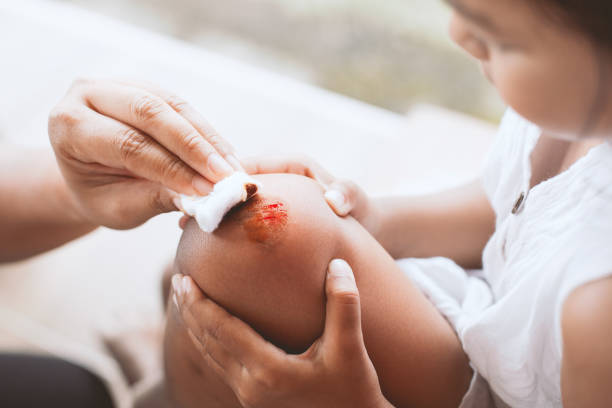July 17, 2023

Insufficient wound care can be an underlying cause for infection. The
infection can cause pain, discomfort and a prolonged healing time. Whether you
would like to discover detailed information about infections, you have to sneak
a peek at https://gliwiceonline.pl/2018072274738/zraniles-sie-brudnym-narzedziem-jak-rozpoznac-zakazenie-rany
site.
The first protection is provided by a thin, acid-based film known as"the acid
mantle. The dynamic barrier is made up of microscopic organisms, known as normal
flora, which prevents pathogens from entering the body.
Prevention
A wound becomes infected when harmful microorganisms, like fungi or bacteria,
enter the wounded area. These microorganisms can be found on the skin, different
parts of the body or even the surroundings. These microorganisms can be found on
objects and materials that help to clean the wound.
The type of the wound, its location, and the manner in which it was created
are all factors that influence the likelihood of getting infected. Studies have
shown that wounds treated with care are at risk of a 1-5% chance of infection;
clean-contaminated wounds suffer from a risk of 3 to 11 percent and dirty or
contaminated wounds have over 27% chance of infection.
Patients with chronic health conditions which affect the body's capability to
fight infections are at higher risk of wound infections. This includes diabetes,
low blood circulation, as well as a weak immune system. The infection can be
caused by wounds that have not been properly cleaned and treated or that develop
itchy. Wound infections are frequently the cause of nosocomial
(hospital-acquired) infected and could lead to long hospital stays with higher
cost and a host of other complications.
The symptoms
If you are injured, the first thing that happens is that your body attempts
to stop the bleeding. Hemostasis is the term for this. It's a good thing. It
permits the blood vessels to expand, which allows for a better blood flow,
oxygen and vitamins to get to the site of wounds in addition to other healing
substances.
The skin is then able to form the crusty dry layer that is known as"scab."
The skin then forms a crusty dry layer called "scab" that serves as a shield,
preventing infections from coming into the. It is possible that the wound will
become infected if the scab fails to disappear or does not form.
Infections that aren't treated right away can spread and cause other
infections in the body. You may also need antibiotics via intravenous or oral
route when the wound is contaminated with dirt or contains foreign substances
like rust. The tetanus vaccination may be required. Medical professionals need
to recognize and treat the tetanus infection as a serious issue. This will help
prevent the rise of antibiotic resistance.
Diagnosis
The infection of the wound could result in pain, discomfort, or even death.
It also slows down healing, and can increase the risk of other complications.
The most at risk for wound infections are those who have medical conditions that
affect their immune system, for example the rheumatoid or diabetes.
There are several methods of identifying the presence of an infection on a
cut by using the evidence-based symptoms or wound cultures. The use of clinical
symptoms and signs leaves doctors without any information regarding the
microorganism(s) that cause the infection. With the rise of antibiotic
resistance and a growing concern for patients, it's important to know which
bacteria are present in the wound.
It is crucial to address wound infection as soon as it is suspected for the
prevention of serious local and systemic complications like sepsis (a
life-threatening condition that includes shock and an illness known as coma).
The affected skin must be cleaned, foreign materials removed and drainage of
pus. To treat and stop the growth of the disease, antibiotics are
recommended.
Treatment
Infections to the wound cause pain, and slows healing of wounds, however, it
is treatable. The wound must be cleaned with soap and warm water. Apply an
antibiotic ointment that is available for purchase without a prescription. Wrap
it in clear bandages. Additionally, it's essential to keep the dressing clean
and replace it every day. It's important to flush the pus in case a tiny pocket
forms. The doctor may recommend oral antibiotics to treat the disease. If you
have a weak immune system, then you may be required to take IV (intravenous)
antibiotics.
Conclusion:
Biofilms are formed by bacteria that adhere to a wound. They adhere to one to form a sticky matrix made up of sugars and proteins. It prevents the immune system from killing them and increases the burden of bacterial growth in the wound, thereby impairing the healing process.
Posted by: StylishGallery at
05:13 AM
| No Comments
| Add Comment
Post contains 773 words, total size 5 kb.
35 queries taking 0.0181 seconds, 67 records returned.
Powered by Minx 1.1.6c-pink.









